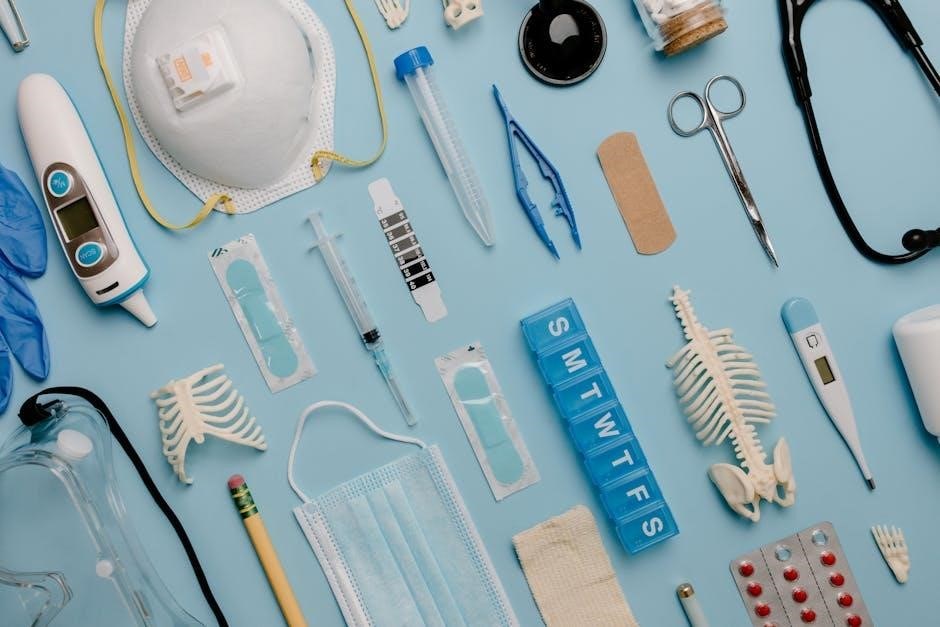
The intra-aortic balloon pump (IABP) is a critical mechanical assist device supporting left ventricular function in high-risk cardiac patients. Nursing care is vital for optimal patient outcomes, focusing on monitoring, complication prevention, and recovery support, ensuring effective use of this life-saving therapy.
1.1 Overview of IABP Therapy
Intra-aortic balloon pump (IABP) therapy is a widely used mechanical assist device for patients with left ventricular failure, enhancing cardiac output and reducing myocardial workload. It is commonly employed during high-risk procedures like percutaneous coronary intervention (PCI) and coronary artery bypass grafting (CABG). The IABP operates by inflating a balloon in the aorta, which augments diastolic blood pressure and improves coronary perfusion. Despite its effectiveness, patient survival rates remain between 29-40% when combined with corrective procedures. This underscores the importance of skilled nursing care to optimize outcomes and address complications promptly, ensuring the therapy’s benefits are fully realized in critical care settings.
1.2 Importance of Nursing Care in IABP Management
Nursing care is pivotal in managing IABP therapy, ensuring patient safety and optimal device function. Nurses monitor hemodynamic parameters, assess cardiac output, and detect complications early. Their role includes educating patients and families, maintaining device integrity, and providing emotional support. Skilled nurses with advanced theoretical knowledge can significantly improve patient outcomes and reduce mortality risks associated with IABP use. Their interventions prevent vascular, infectious, and mechanical complications, crucial for maximizing the benefits of this life-saving therapy in critical care settings.
1.3 Scope of the Article
This article provides a comprehensive guide to intra-aortic balloon pump (IABP) nursing care, focusing on best practices for patient management. It covers pre-insertion considerations, insertion techniques, monitoring strategies, and complication management. The scope includes patient selection criteria, hemodynamic monitoring, and nursing interventions to optimize therapy outcomes. Additionally, it addresses weaning processes, education, and troubleshooting common issues. The article serves as a practical resource for nurses, emphasizing evidence-based practices to enhance patient safety and improve clinical outcomes in critical care settings. By addressing both foundational and advanced aspects of IABP care, it equips nurses with the knowledge needed to deliver high-quality, patient-centered care effectively.
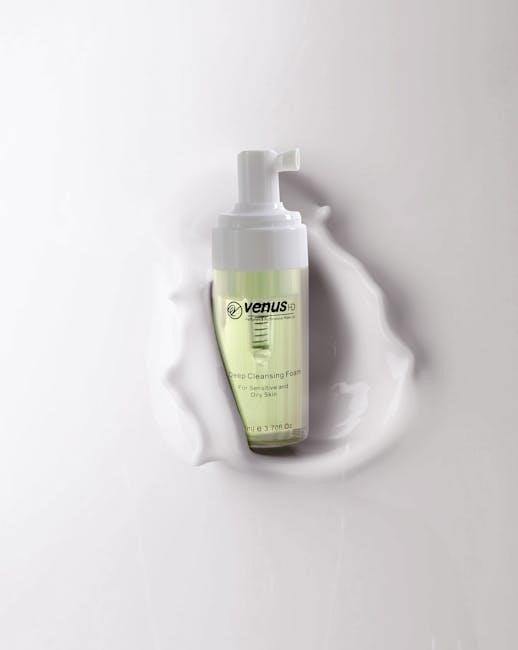
Pre-Insertion Considerations for IABP
Pre-insertion involves patient assessment, ensuring proper equipment, and obtaining informed consent to facilitate a smooth and safe insertion process;
2.1 Patient Selection Criteria
Patient selection for IABP therapy involves assessing clinical indications, contraindications, and overall suitability. Indications include cardiogenic shock, refractory angina, or post-cardiac surgery low output states. Patients with severe aortic regurgitation or aortic dissection are typically excluded. Vascular access and adequate femoral artery size are critical for percutaneous insertion. The patient’s hemodynamic instability and potential for recovery also guide selection. Nursing staff must ensure the patient meets specific criteria to maximize benefits and minimize risks. Proper patient selection is vital for effective IABP therapy and improved clinical outcomes.
2.2 Informed Consent and Patient Education
Informed consent is legally required before IABP insertion, ensuring the patient understands the procedure, benefits, and risks. The healthcare team must explain the purpose of IABP therapy, potential complications, and alternative treatments. Patient education fosters active participation in care and improves safety. Nurses play a key role in educating patients and families about the device, its function, and post-insertion care. Clear communication helps alleviate anxiety and ensures the patient can report concerns or changes in condition. Adequate education also empowers patients to comply with treatment plans and recognize signs of complications. This process builds trust and ensures the patient is well-informed.
2.3 Bed Space Preparation and Equipment Readiness
Proper bed space preparation is critical for IABP insertion and management. The bed should be positioned to allow easy access to the patient and equipment. The IABP console must be placed near the patient, ensuring the balloon catheter is not kinked or obstructed. Essential supplies, such as pressure tubing, replacement balloons, and a transducer, should be readily available. The console must be powered on and primed before insertion to ensure functionality. A monitor for hemodynamic parameters should also be prepared. Having all equipment ready minimizes delays and ensures patient safety. This preparation is vital for smooth insertion and ongoing care.

Insertion and Setup of IABP
The IABP insertion involves surgical or percutaneous methods. Proper setup includes priming the console, attaching pressure tubing, and calibrating the device. Continuous monitoring ensures optimal functioning.
3.1 Surgical vs. Percutaneous Insertion Methods
The insertion of an IABP can be performed via surgical or percutaneous methods. The surgical approach involves making an incision in the femoral artery, providing greater stability but increasing infection risk. Percutaneous insertion uses a needle and guidewire, minimizing tissue trauma and recovery time. The choice depends on patient condition, vascular access, and clinical urgency. Nurses must prepare equipment and assist during insertion, ensuring strict asepsis for surgical cases. Post-insertion care includes monitoring the site for bleeding or hematoma. Understanding these methods is crucial for effective nursing support and patient outcomes. Each technique has its benefits and risks, requiring tailored nursing interventions.
3.2 Initial Setup and Calibration of the Device
The initial setup and calibration of the IABP are critical for ensuring proper function. Nurses must connect the balloon catheter to the pump console, ensuring all tubing is securely attached. The device is calibrated by priming the tubing with saline to remove air bubbles. Synchronization with the patient’s ECG or arterial pressure waveform is essential for proper timing of balloon inflation and deflation. The nurse verifies the augmentation ratio and adjusts settings as needed. Manufacturer guidelines must be followed for specific calibration steps. Proper setup ensures optimal hemodynamic support and minimizes risks. Nurses should double-check all connections and settings before initiating therapy to ensure patient safety and effective device operation.
3.4 Immediate Post-Insertion Checks
After IABP insertion, nurses must perform immediate checks to ensure proper function and patient safety. Assess hemodynamic stability by monitoring blood pressure, heart rate, and cardiac output. Verify the balloon pump console settings, including inflation/deflation timing and pressure. Check the insertion site for bleeding or hematoma. Ensure the patient is comfortable and free from pain or distress. Confirm proper placement via chest X-ray or fluoroscopy if needed. Review the patient’s ECG for rhythm changes. Assess distal perfusion in the affected limb, checking for warmth, pulses, and capillary refill. Document findings and notify the physician of any abnormalities. Ensure alarms are set on the console and the patient is closely monitored for complications.
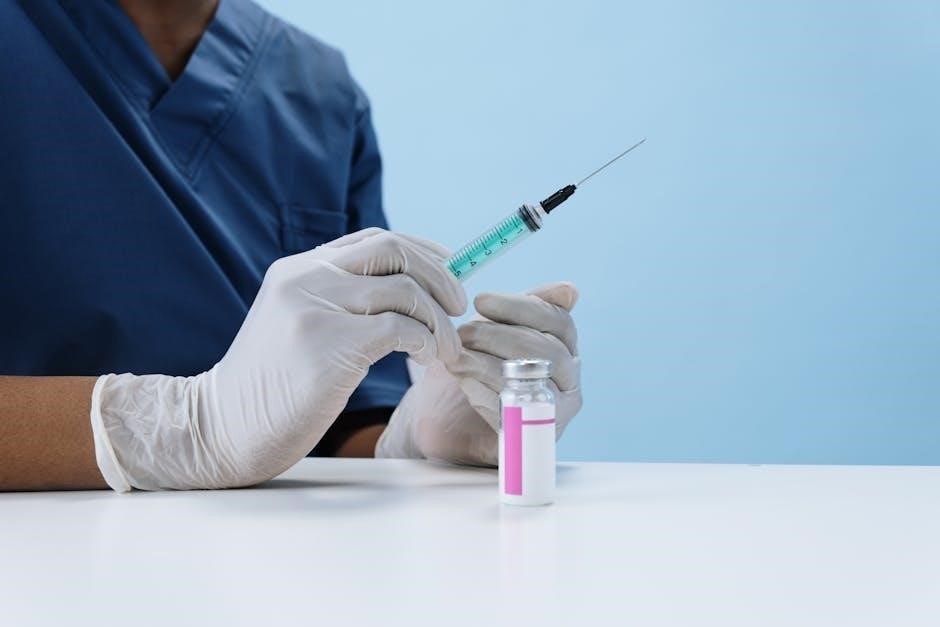
Monitoring the IABP
Continuous monitoring of the IABP ensures proper function and patient stability. Track hemodynamic parameters, mechanical device performance, and patient clinical responses to detect early complications. Adjust settings as needed to optimize cardiac support while maintaining alarm readiness and documenting findings regularly for tailored interventions.
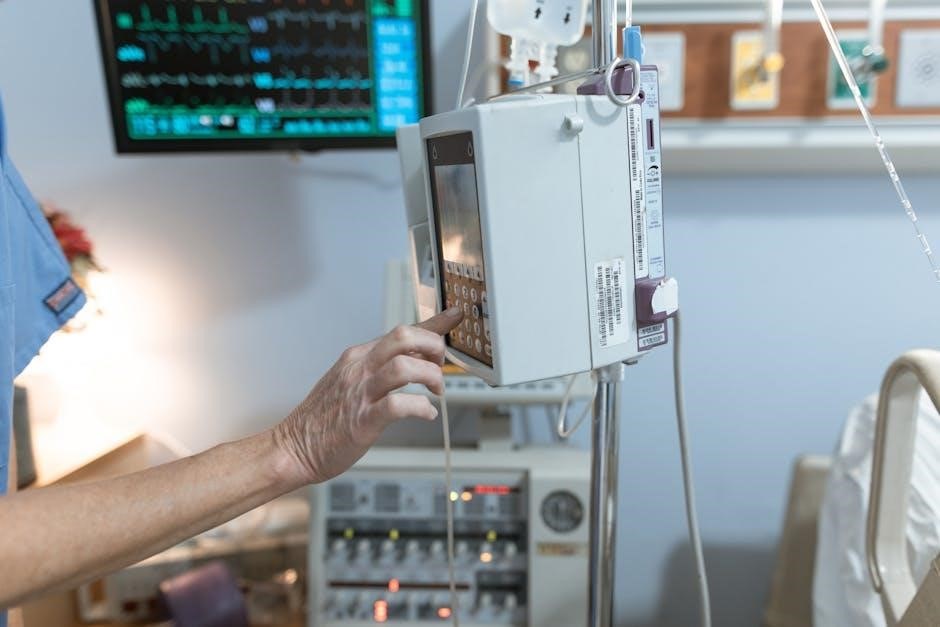
4.1 Hemodynamic Monitoring
Hemodynamic monitoring is critical in IABP therapy to assess cardiac function and ensure effective support. Key parameters include blood pressure, heart rate, and cardiac output. The IABP enhances diastolic blood pressure, improving coronary perfusion, while reducing afterload during systole. Monitoring allows nurses to evaluate the device’s impact on hemodynamics and adjust settings as needed. Regular assessment of mean arterial pressure (MAP), systolic and diastolic blood pressure, and cardiac output helps maintain optimal perfusion. Continuous surveillance ensures the IABP supports the patient’s circulatory needs without causing undue stress on the heart. Timely interventions based on hemodynamic trends are essential for patient stability and outcomes.
4.2 Mechanical Function Monitoring
Monitoring the mechanical function of the IABP ensures proper operation and patient safety. Nurses must check the balloon’s inflation and deflation synchrony with the cardiac cycle, visible via the pressure waveform. The console’s alarm system should be enabled to detect issues like loss of augmentation or high inflation pressures. Regular inspection of the tubing and connections is essential to prevent kinking or disconnections. The pump’s gas supply and battery life must also be monitored to avoid interruptions. Timely troubleshooting of mechanical issues, such as alarms or abnormal waveforms, is critical to maintain device efficacy and prevent complications. This ensures continuous, reliable support for the patient.
4.3 Patient Assessment and Response
Patient assessment is crucial to ensure the effectiveness of IABP therapy and identify potential complications early. Nurses should regularly monitor vital signs, cardiac rhythm, and hemodynamic parameters, such as blood pressure and cardiac output. Peripheral perfusion, including pedal pulses and capillary refill, should be assessed to detect signs of ischemia. Patients may exhibit discomfort, anxiety, or fatigue, requiring empathetic care and reassurance. Any changes in patient condition, such as chest pain or dysrhythmias, should prompt immediate investigation. Timely interventions, including adjusting IABP settings or notifying the physician, are essential to optimize patient outcomes and ensure safety. Continuous vigilance is key to managing the patient’s response to therapy effectively.

Complications Associated with IABP
IABP therapy is associated with vascular, infectious, and mechanical complications. Vascular issues include bleeding, thrombosis, and limb ischemia. Infections can occur at the insertion site, while device malfunctions may arise.
5.1 Vascular Complications
Vascular complications are common with IABP use, often due to the catheter’s presence in the aorta. Limb ischemia is a significant risk, particularly in patients with pre-existing peripheral artery disease. Monitoring for signs of decreased perfusion, such as coolness, pallor, or pain in the affected limb, is critical. Bleeding at the insertion site is another concern, especially in anticoagulated patients. Thrombosis can occur, leading to embolic events. Nurses must assess vascular status regularly, including Doppler checks, and report any abnormalities promptly. Early intervention, such as adjusting catheter position or removing the device, may be necessary to prevent permanent damage.
5.2 Infectious Complications
Infectious complications are a significant concern in IABP therapy due to the invasive nature of the device. Catheter-related bloodstream infections (CRBSI) and local site infections are common risks. Prolonged use of the IABP increases the likelihood of bacterial colonization, particularly with organisms like Staphylococcus aureus. Nurses must monitor for signs of infection, such as erythema, swelling, or purulent drainage at the insertion site, as well as systemic signs like fever or chills. Strict adherence to sterile technique during insertion and dressing changes is crucial. Regular assessment and early intervention, including antimicrobial therapy or device removal, are essential to prevent severe outcomes.
5.3 Mechanical Complications
Mechanical complications with IABP therapy can arise due to device malfunctions or improper functioning. Common issues include balloon rupture, catheter kinking, or malposition, which can lead to reduced or absent balloon inflation. These complications may result in decreased cardiac support, hemodynamic instability, or even thrombus formation. Nurses should monitor for alarm activations indicating mechanical failures and assess for signs of inadequate perfusion, such as decreased urine output or ischemic changes on ECG. Immediate interventions include checking the device setup, ensuring proper catheter positioning, and collaborating with the medical team for potential device replacement or adjustment. Regular inspection of the catheter and connections is vital to prevent such issues.
5.4 Other Potential Complications
Beyond vascular and infectious issues, other complications associated with IABP therapy include bleeding due to anticoagulation therapy, thrombocytopenia, and renal dysfunction. Thrombocytopenia may occur from the balloon’s mechanical effect on blood components. Renal complications can arise due to reduced perfusion or catheter obstruction near the renal arteries. Neurological complications, such as stroke or transient ischemic attacks, may occur from emboli or malposition. Additionally, patient discomfort, anxiety, or skin breakdown from prolonged bed rest and immobility are concerns. Nurses must monitor for these issues and address them promptly to ensure optimal patient outcomes and minimize risks. Early intervention is key to managing these complications effectively.

Nursing Interventions for Complications
Nurses must promptly assess and address complications, adjusting IABP settings, monitoring hemodynamics, and ensuring infection prevention. Timely interventions are critical to minimize adverse outcomes.
6.1 Management of Vascular Complications
Vascular complications, such as limb ischemia or bleeding, require immediate attention. Nurses should assess perfusion distal to the insertion site, monitoring for coolness, pallor, or decreased pulses. If compromised, notify the physician and consider balloon deflation or repositioning. Strict asepsis is crucial to prevent infection. Regularly inspect the site for hematoma or swelling. For bleeding, apply pressure and administer medications as prescribed. Document findings and maintain open communication with the healthcare team. Early intervention can prevent severe outcomes, ensuring patient safety and optimal device function. Continuous monitoring and patient education are key to managing vascular issues effectively.
6.2 Prevention and Treatment of Infections
Infection prevention is critical in IABP care to minimize complications. Ensure strict hand hygiene and use sterile technique during insertion and dressing changes. The insertion site should be cleaned with antiseptic solution and covered with a sterile dressing. Prophylactic antibiotics may be administered as per hospital protocols to reduce infection risk. Monitor for signs of infection, such as redness, swelling, or purulent drainage, and report them promptly. Maintain asepsis when handling the catheter or balloon. If an infection occurs, it may be necessary to remove the balloon and initiate appropriate antibiotic therapy. Regular surveillance and documentation are essential for early detection and treatment.
6.3 Addressing Mechanical Issues
Mechanical complications with IABP require prompt intervention to ensure optimal function and patient safety. Common issues include balloon rupture, kinking of the catheter, or malposition. If the balloon ruptures, stop the pump immediately and remove the catheter to prevent embolism. For kinking, check tubing for twists or bends and reposition as needed. Regularly inspect the system for wear or damage. Address alarm activations promptly, such as low helium volume or high inflation pressure, by troubleshooting the cause. Maintain proper catheter positioning and securement to prevent dislodgment. Document all mechanical issues and interventions for continuity of care. Proper handling ensures device reliability and patient outcomes.
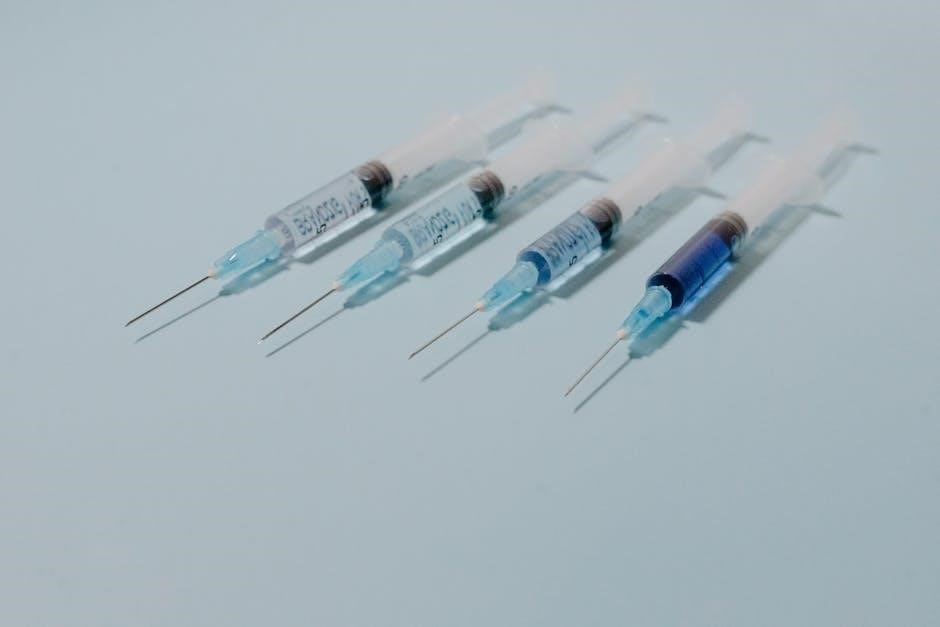
Weaning the Patient Off IABP
Weaning involves gradually reducing IABP support, allowing the heart to resume independent function. Close monitoring of hemodynamics and clinical status ensures a smooth transition and prevents complications.
7.1 Criteria for Weaning
Weaning from IABP is considered when the patient shows signs of clinical and hemodynamic stability. Key criteria include stable vital signs, improved cardiac output, and reduced need for vasoactive medications. The patient should demonstrate an ability to maintain adequate blood pressure and perfusion without IABP support. Additionally, evidence of decreased left ventricular workload and improved ejection fraction is essential. The weaning process is typically initiated when the patient is hemodynamically stable, off vasopressors, and showing signs of recovery from cardiac dysfunction. A gradual reduction in IABP support is recommended to avoid sudden increases in cardiac workload.
7.2 Step-by-Step Weaning Process
The weaning process begins with gradual reduction of IABP support, starting with decreasing the augmentation ratio (e.g., from 1:1 to 1:2). The patient is closely monitored for signs of hemodynamic instability, such as decreased blood pressure or increased cardiac workload. If stable, the ratio is further reduced to 1:3 or 1:4. Once the patient tolerates minimal support, the IABP is discontinued, and the catheter is removed. Continuous monitoring of vital signs, cardiac output, and peripheral perfusion is essential during and after weaning. The process is tailored to the patient’s response, ensuring a smooth transition to independent cardiac function.
7.3 Post-Weaning Monitoring
After weaning, the patient requires close monitoring to assess hemodynamic stability and cardiac function. Vital signs, such as blood pressure, heart rate, and oxygen saturation, are continuously observed. Cardiac output and peripheral perfusion are evaluated to ensure adequate tissue oxygenation. The femoral site is monitored for bleeding or hematoma, and the patient is assessed for signs of ischemia or heart failure. Monitoring typically continues for 24-48 hours post-weaning. Documentation of the patient’s response and any complications is crucial. This phase ensures a smooth transition and early detection of potential issues, allowing timely interventions to maintain patient stability and recovery;

Nursing Education and Training
Comprehensive training programs, including hands-on workshops and theoretical sessions, equip nurses with the skills to manage IABP therapy effectively, ensuring patient safety and optimal outcomes.
8.1 Training Programs for IABP Care
Structured training programs are essential for nurses to master IABP care. These programs include simulation labs, hands-on workshops, and theoretical sessions to ensure proficiency in managing IABP therapy. Nurses learn about device operation, patient assessment, and troubleshooting through case-based learning. Training emphasizes hemodynamic monitoring, alarm management, and emergency interventions. Practical exercises focus on inserting, calibrating, and weaning the device safely. Competency assessments ensure nurses can handle complex situations confidently. Continuous education updates nurses on advancements in IABP technology and evidence-based practices, enhancing patient outcomes and safety. These programs are vital for preparing nurses to deliver high-quality, specialized care in critical settings.
8.2 Role of Nursing Preceptors
The role of nursing preceptors is crucial in fostering competency and confidence among new nurses in IABP care. Preceptors provide one-on-one mentorship, guiding nurses through hands-on training and real-world application of IABP therapy. They share their clinical expertise, helping nurses understand complex concepts and refine their skills in patient assessment, device management, and troubleshooting. Preceptors also offer feedback and support, ensuring nurses can apply theoretical knowledge in practical settings. Their guidance helps nurses develop critical thinking and decision-making abilities, reducing errors and enhancing patient safety. Effective preceptorship programs ensure a smooth transition for nurses, fostering proficiency in IABP care and improving overall patient outcomes.
8.3 Continuing Education Resources
Continuing education resources are essential for nurses to stay updated on IABP therapy advancements. Professional organizations, such as the American Association of Critical-Care Nurses (AACN), offer specialized courses and certifications. Online platforms provide accessible modules on IABP management, while conferences and workshops offer hands-on training. Hospitals often conduct in-house training sessions tailored to their specific IABP protocols. Additionally, peer-reviewed journals and clinical guidelines, like those from the Society of Critical Care Medicine, serve as valuable resources. Simulation-based training is another effective tool, allowing nurses to practice IABP insertion and management in a controlled environment. These resources ensure nurses maintain high standards of care and adapt to emerging practices.

Troubleshooting Common Issues
Identifying and resolving issues like alarm activations, mechanical failures, or blood in the line is crucial. Nurses must perform immediate checks, ensure proper device function, and maintain patient safety.
9.1 Alarm Activation and Resolution
Alarm activation on the IABP system indicates potential issues requiring immediate attention. Common triggers include incorrect balloon sizing, inappropriate trigger settings, or patient movement. Nurses should first assess the patient’s hemodynamic stability and check the device settings. Ensuring the trigger source (e.g;, ECG or pressure waveform) is accurate is critical. If alarms persist, verifying catheter position and balloon size is essential. Adjustments may involve repositioning the catheter or consulting the cardiologist. Documentation of alarms and resolutions is vital for continuity of care. Timely intervention prevents complications and ensures optimal device function, maintaining patient safety and therapeutic efficacy.
9.2 Blood in the Line: Immediate Actions
If blood is detected in the IABP circuit, immediate action is required to prevent complications. The nurse should stop the IABP temporarily and notify the physician. The affected line should be clamped to avoid air entry or blood loss. A thorough assessment of the patient’s hemodynamic status is essential. Prepare for potential catheter removal or replacement under sterile conditions. Monitor for signs of infection or thrombosis. Document the incident and interventions taken. Collaboration with the healthcare team ensures patient safety and minimizes risks associated with this complication. Prompt resolution is critical to maintain therapeutic effectiveness and prevent adverse outcomes.
9.3 Other Device-Related Problems
Besides alarms and blood in the line, other IABP-related issues may arise, such as gas leaks, tubing kinks, or console malfunctions. If a gas leak occurs, stop the pump immediately and notify the physician. Inspect the tubing for kinks or obstructions and ensure proper placement. For console issues, refer to the manufacturer’s troubleshooting guide or contact technical support; Always maintain patient safety during device downtime. Monitor hemodynamic stability and prepare for alternative supportive measures if needed. Document all incidents and interventions; Timely resolution of these issues ensures continuous patient support and minimizes complications. Collaboration with the healthcare team is essential for effective problem-solving.
Effective nursing care in IABP therapy significantly improves patient outcomes. Continuous vigilance, skilled interventions, and teamwork are essential. Future advancements will further enhance IABP nursing practices and patient care.
10.1 Summary of Key Points
Intra-aortic balloon pump (IABP) nursing care is critical for optimizing patient outcomes. Key areas include patient selection, insertion techniques, and continuous monitoring of hemodynamic and mechanical functions. Nurses must promptly identify and manage complications such as vascular, infectious, and mechanical issues. Effective weaning strategies and post-weaning care are essential for a smooth transition. Ongoing education and training for nursing staff ensure competence in IABP management. By adhering to evidence-based practices and maintaining vigilance, nurses play a pivotal role in improving patient recovery and reducing complications. This comprehensive approach underscores the importance of specialized nursing care in IABP therapy.
10.2 Future Directions in IABP Nursing Care
Future advancements in IABP nursing care may include the integration of automated systems and AI-driven monitoring tools to enhance patient safety and outcomes. Personalized care strategies, tailored to individual patient needs, could improve efficiency and reduce complications. Simulation-based training programs may become more prevalent, offering nurses hands-on practice in complex scenarios. Telehealth innovations could enable remote monitoring of IABP patients, expanding access to specialized care. Additionally, multidisciplinary collaboration and standardized protocols may further streamline care processes. Continuous research into biomaterials and device design could mitigate risks and improve patient comfort. These advancements aim to enhance the quality and accessibility of IABP nursing care globally.